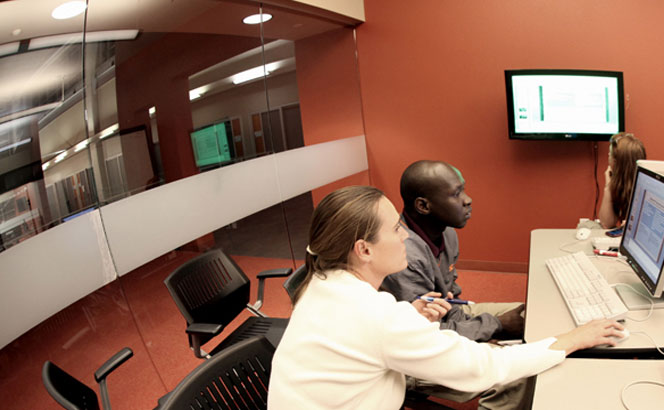From the fluidity of individual student learning styles to the foundations of the university business model, technology is well on its way to transforming the educational world, Northern Arizona University President John Haeger said Monday during his presentation at a public forum.
In the swirl of questions about the future of these changes, Haeger said, two of the biggest for NAU are what role it will play and what the university will look like in a vastly altered higher education landscape.
“I want to see NAU faculty continue our tradition of dominating online,” Haeger said as he offered ongoing funding through his technology initiative. Six revamped courses are currently being offered at NAU as a result of the first round of funding, but the pace of change has increased, with news daily of new partnerships between high-powered universities and private providers of software and course platforms.
“This is major league competition,” Haeger said.
A discussion that ranged from MOOCs—which Haeger said could come to NAU someday—to the university’s own progress toward competency-based Personalized Learning, returned repeatedly to the idea that NAU can meet a daunting list of challenges by immersing itself in the transformation at hand.
From accommodating enrollment growth, to establishing a sustainable business model, to increasing the amount and quality of faculty contact with students, embracing the potential of current technological change is essential if NAU is to succeed as a 21st century institution, Haeger said.
“We’ve all thought of online teaching as taking what we do in the classroom and doing it online,” Haeger said, “but now the technology is so powerful you can do something very different.”
Haeger offered his own academic discipline, history, as an example.
“It was like a cottage industry: everybody had their own course and own classroom, own their ways of evaluating students,” Haeger said of his teaching days. “What the technology changes are driving us to is having greater uniformity of courses offered to students and better ways to determine whether students learned the material.”
Citing the rapid growth in the sophistication and availability of learning analytics, Haeger said, “Suddenly we have huge data sets in which we learn all sorts of reasons why an individual student learns or doesn’t learn in a course, and if we can tap that then it will make a world of difference.”
Responding to questions from the audience about faculty buy-in and student acceptance of new approaches, Haeger pointed out that he will meet with student leadership in January to discuss ways of moving forward, and that he is continuing to work with the Faculty Senate to clarify the picture.
The latter point was reinforced by Provost Laura Huenneke.
“It’s absolutely key that faculty help us stay abreast of what’s available out there and that faculty are helping make the best informed decisions possible,” Huenneke said. “Fortunately, we have a host of faculty among our community who have been out there testing the waters, reporting back on success or otherwise, deciding how to adapt some of these instructional technologies.”
– – –
Articles of related interest:
President Haeger blog: “A big-picture moment”
Sebastian Thrun redefining higher education
George Mehaffy on “Challenge and Change”



